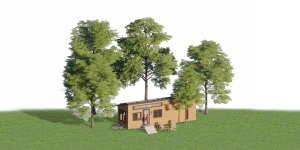SUSTAINGINEERING TINY HOME PROJECT:
UBC Sustaingineering is an interdisciplinary engineering student design team that develops renewable energy technologies to support communities globally. We strive to provide our volunteer students with technical skills training, practical knowledge of engineering design, and hands-on experience while placing sustainability and social action at the core of these practices. Our team has active collaborations with several NGOs, social enterprises, and schools in Canada, Mexico, Nepal, and Nicaragua as well as a sister branch in Tec de Monterrey, Mexico. UBC Sustaingineering’s current projects are designing these cores technologies: Hybrid Renewable Energy System (HRES), Low-Cost Wind Turbine (LCWT), and a Rainwater Harvesting System (RWHS). Past projects include a Solar Powered Water Pump (SPWP) with a Remote Monitoring System (RMS).

“Sustaingineering is dedicated to designing, developing and deploying sustainable solutions to provide global access to clean energy”
More about Sustaingineering can be found by clicking here: Sustaingineering
Project Objectives
Soaring housing prices and increasing natural disasters continually displace people around the globe adding to the growing number of those facing evictions and homelessness. According to the United Nations, it is estimated that 1.8 billion people lack adequate housing, nearly 1 billion people lack access to reliable electricity, and 2.2 billion people lack access to safely managed drinking water worldwide. To come up with a solution to these issues, the Sustaingineering team conceived the idea of the Tiny Home Project. The Tiny Home Project incorporates each of the core Sustaingineering technologies into one cohesive system. The team will continuously develop future iterations of the Tiny Home in the years to come that will improve the design integrations and costs into one modular design. Over the next one to two years, the core technologies and skills our team develops will be deployed for our stakeholder and rightsholder communities to address issues of housing, energy, and water in these regions, in collaboration with Builders Without Borders Foundation. This initial prototype will be continually used by future Sustaingineering teams to test their systems, acting as a living lab acting towards real-world applications.
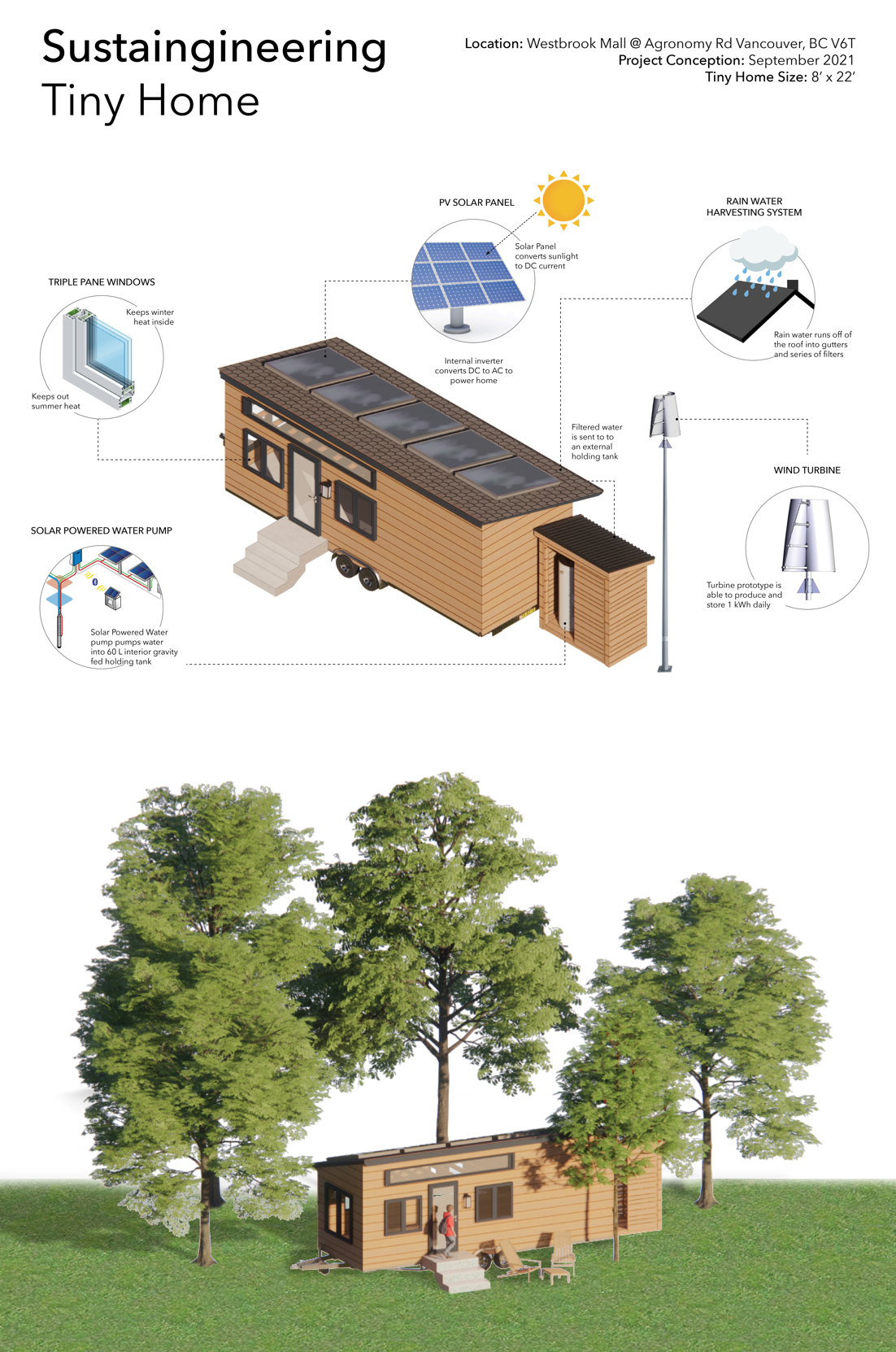
Systems Integration
The Tiny Home Project is one branch of Sustaingineering, acting as the host facility for testing the other team’s technologies. The LCWT is being designed in partnership with Casa Congo, a non-profit in Nicaragua, which will be one supply of electricity for the Tiny Home. The HRES will allow us to integrate the LCWT, a solar PV system, and a connection to the electricity grid. With these three sources of electricity, the Tiny Home will be able to generate enough power for basic amenities such as powering a fridge and charging laptops. The RWHS will be installed on the Tiny Home to test water collection on the roof and be integrated into an internal plumbing system. Upon completion, the goal is to incorporate Sustaingineering’s SPWP as the Tiny Home’s pump for internal plumbing purposes.
Site Location:
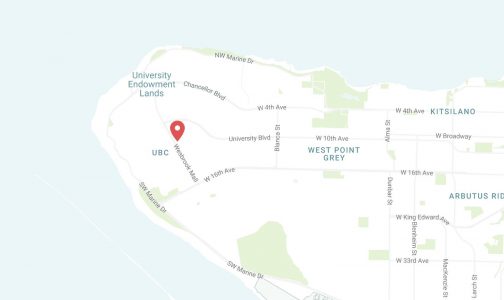
Click here for a detailed site plan: AYO Site - Gates, Fences, Containers
Progress and Plans
The defining objectives of the Tiny Home project were determined in August - September of 2021. Throughout the 2021 - 2022 school year, our student team has designed and planned a Tiny Home prototype. Designing the systems and setting boundaries began in October. Floor plans and plumbing designs were created and reviewed in January-February 2022. Iterations upon these designs continue as of April 2022. The Tiny Home will be built on a street-legal trailer which was customized to suit our planned designs. This specially ordered trailer now lives on the UBC campus awaiting construction, which is set to begin in June 2022. The location on the UBC campus gives students optimal access to build and test their designs. As such, Sustaingineering has been working closely with the Centre for Interactive Research on Sustainability (CIRS) and UBC Campus & Community Planning, who have helped us acquire this space for the construction and testing of the Tiny Home.
Our goal going forward is to complete the majority of construction by early September of 2022. Testing of all of the systems is expected to continue after the completion of construction, which could include additional features to the original design.

Exterior Elevations
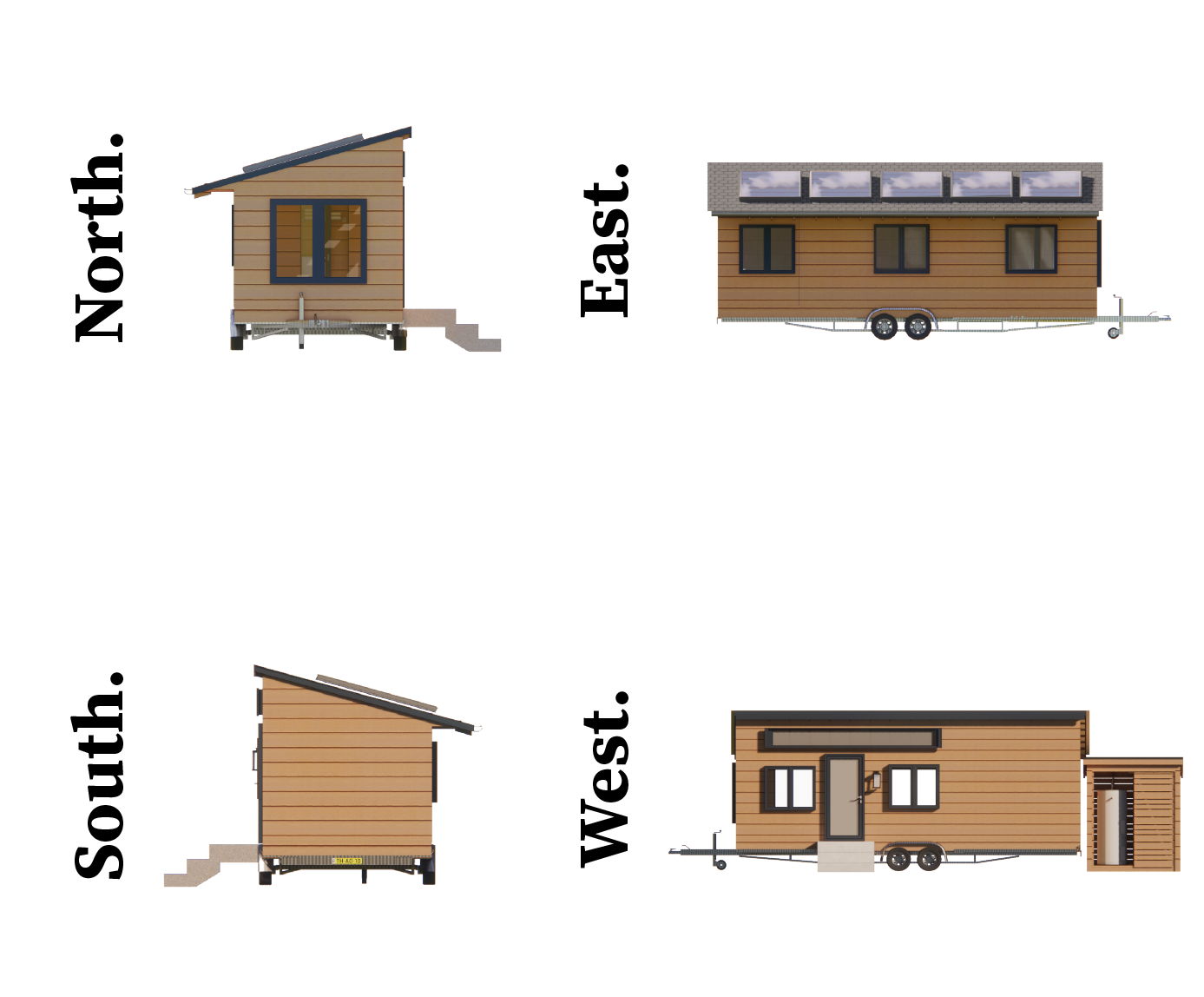
Working Construction Document Set
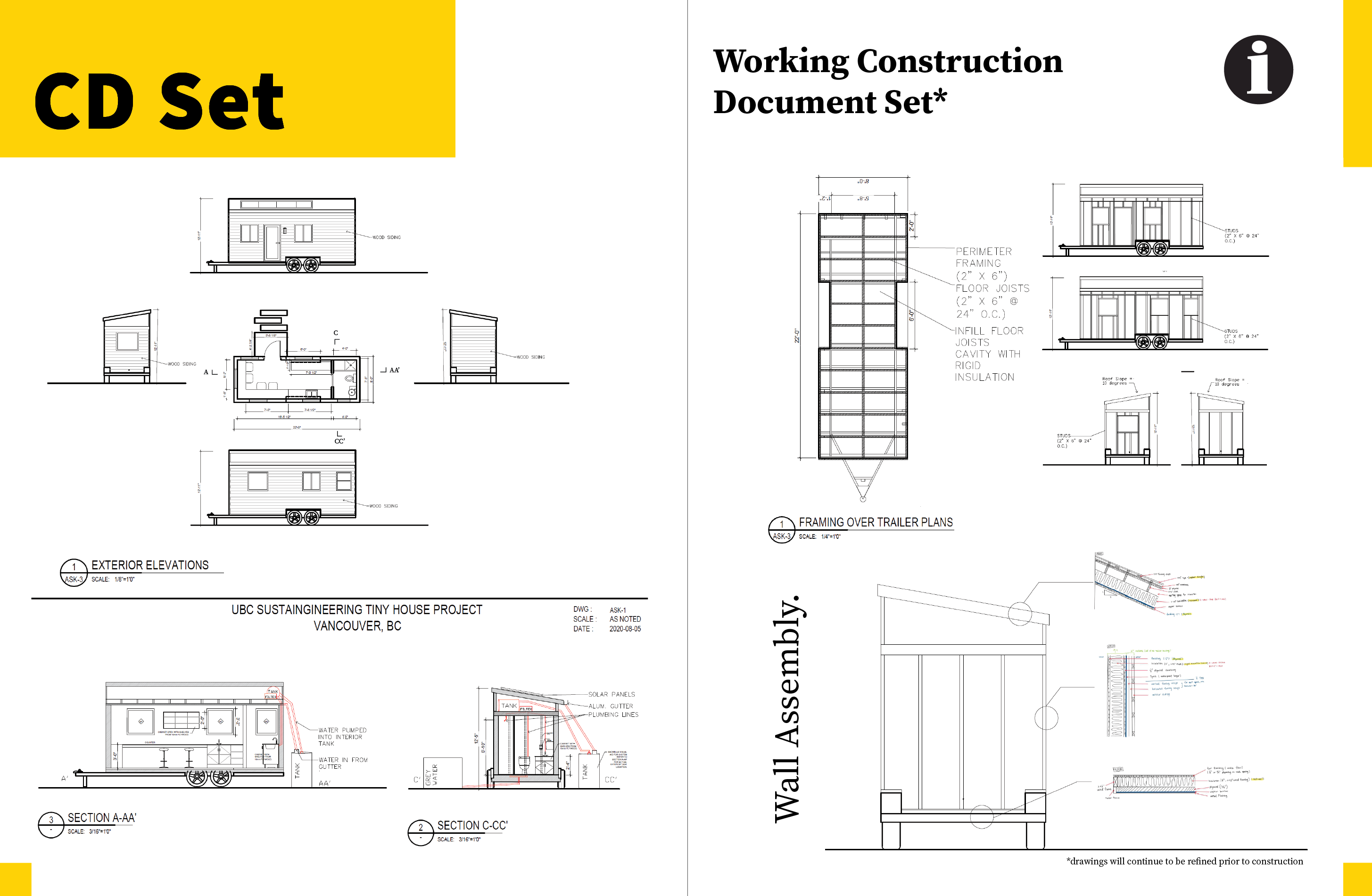
A PDF of the current Construction Document Set for the Tiny Home can be viewed by clicking here: Sustaingineering TH CD Set
Projections - Future of the Tiny Home Project
V1: As previously mentioned, the first version of the Tiny Home, designed over the last 6 months, will be a test site for future Sustaingineering students. Upon the home's completion in September, teams will be able to continually test and improve their sustainable technologies in a real-world setting. This will allow teams to further develop and refine each of the integrated systems so that they can be easily replicated and implemented swiftly into future projects. Additionally, the accessible site along Westbrook Mall will become an educational opportunity for all UBC students. By continually working with CIRS, Sustaingineering hopes to have the Tiny Home become a part of a campus tour highlighting sustainable infrastructure.
V2: Over the last decade homelessness in Vancouver, has become a rapidly increasing social issue. Rising market costs and funding cuts in affordable housing have been some of the leading causes of this crisis. As the Tiny Home Project develops with future iterations it has the potential to be replicated in Vancouver’s Downtown Eastside. Here tiny homes could be deployed as temporary and full-time housing while acting as a model in the city, displaying what sustainable housing can look like. Sustaingineering students would be able to use remote monitoring and continue to check in on homes to further each system’s potential.
V3: In much later stages, the Tiny Home Project could role out easily replicable modular homes. A modular design would enable the project to achieve an economy of scale, allowing sustainable homes to be produced and sent to developing communities through organizations such as Builders Without Borders. Dr. Martin Ordonez, a Sustainginnering founder, has worked closely with communities in South America and hopes to provide clean energy and sustainable housing to people in these areas through this project.
Personal Reflection
Throughout this 2021-2022 school year I have fulfilled the role of Architect for the Sustaingineering Tiny Home team. The initial stages of this project improved my critical thinking skills by adapting to changing circumstances and fields of research to arrive at one comprehensive goal. I feel that through this experience I have been able to truly develop a better understanding of sustainable engineering technologies and their integration into the built environment. By working with an interdisciplinary team I have been able to hone my collaborative skills to design and plan an architectural project. In doing so, I have improved my rendering and drafting skills to visually communicate with each of the involved parties. Through modeling in Sketchup Pro and creating physical representations of the Tiny Home for our team, I felt that everyone was able to gain a better understanding of the project’s spatial arrangement. Additionally, communicating and organizing with industry contractors and architects has left me feeling confident going into a professional career and working on future projects. Overall, I was able to further explore the potential social, economic, and environmental benefits of tiny homes. Being a part of this project has been very rewarding, and I’m excited to continue to be a part of our Tiny Home Project’s progress going forward through its construction.
Special thanks to Mari Fujita (Directed Study Advisor), Jason Village (Team Lead),
Brian Boone (President of BWB) and Renaude Laberge-Boisjoli (Architectural Support)


